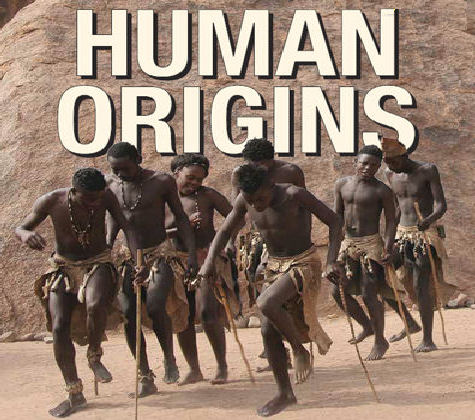MEMBERS & VISITORS:
Humanity Began In Africa
A recent study published in Nature has challenged the long-held belief that modern humans originated from a single population in Africa during a specific period. By analyzing the genomes of 290 individuals, researchers have discovered evidence of at least two populations that coexisted in Africa for a million years before merging in several independent events across the continent.
The notion that Africa is the birthplace of our species is supported by various lines of evidence. Fossils of early human-like creatures dating back 300,000 years and the oldest known stone tools have been found in Africa. Furthermore, African populations exhibit greater genetic diversity compared to other groups, reflecting the fact that humans lived and evolved on the continent for thousands of generations before spreading to other parts of the world.
Previously, researchers proposed different locations within Africa as the birthplace of our species, with evidence from early human-like fossils in Ethiopia pointing to East Africa, while some groups in South Africa appeared distantly related to other Africans, suggesting a deep history in that region.
To explore different scenarios of human populations in Africa over time, researchers, led by geneticist Brenna Henn from the University of California, Davis, developed software to simulate human history on a large scale. They compared the DNA of African groups such as the Mende, the Gumuz, the Amhara, and the Nama with the genomes of a person from Britain and a 50,000-year-old Neanderthal found in Croatia.
The analysis revealed that our species had ancestral populations, referred to as Stem1 and Stem2, that existed as distinct groups a million years ago. Stem1 eventually gave rise to the Neanderthals, while both Stem1 and Stem2 persisted in Africa for hundreds of thousands of years. Rather than accumulating distinct mutations in their DNA, the two populations remained moderately different, similar to the genetic difference observed today between Europeans and West Africans. This suggests that individuals from Stem1 and Stem2 interbred and mixed their DNA.
The study does not identify specific locations where Stem1 and Stem2 lived in Africa, as it is possible that these groups migrated throughout the continent over vast periods of time. However, about 120,000 years ago, significant changes occurred. In southern Africa, individuals from Stem1 and Stem2 merged, leading to the emergence of a new lineage that would eventually give rise to the Nama and other present-day human populations in that region. Similar mergers between Stem1 and Stem2 groups took place elsewhere in Africa, resulting in lineages that led to populations in West and East Africa, as well as those who expanded out of Africa.
Environmental factors, such as climate changes and the rising sea levels, may have contributed to these mergers by forcing groups to move and seek new habitats. Some bands of hunter-gatherers might have been compelled to retreat from coastal areas or migrate due to arid regions. Even after the mergers, individuals with exclusively Stem1 or Stem2 ancestry seem to have survived, as evidenced by the discovery of genetic intermixing between the Mende people and Stem2 individuals as recently as 25,000 years ago.
The researchers are planning to include more African genomes from different regions to further refine their models. It is possible that additional populations that persisted in Africa for hundreds of thousands of years will be identified, shedding more light on the complex origins of our species.
Dr. Scerri, an evolutionary archaeologist not involved in the study, speculates that the survival of modern humans while Neanderthals became extinct may be attributed to the network of intermingling populations across Africa. This arrangement allowed our ancestors to maintain greater genetic diversity, which potentially facilitated their adaptation to changing climates and environments, ultimately contributing to their success as a species. Yet, even today there exists a dogmatic corner of humanity which identifies itself as white supremacists. SMH.
We have published other informative posts on Invention School’s website which may interest you. To view our entire catalog of over 800 posts go to inventionschool.tech/category/blog/ or use our handy search tool to find topics of interest to you.
Mechanical/Solar Engineer, Prof. Oku Singer
(186)
